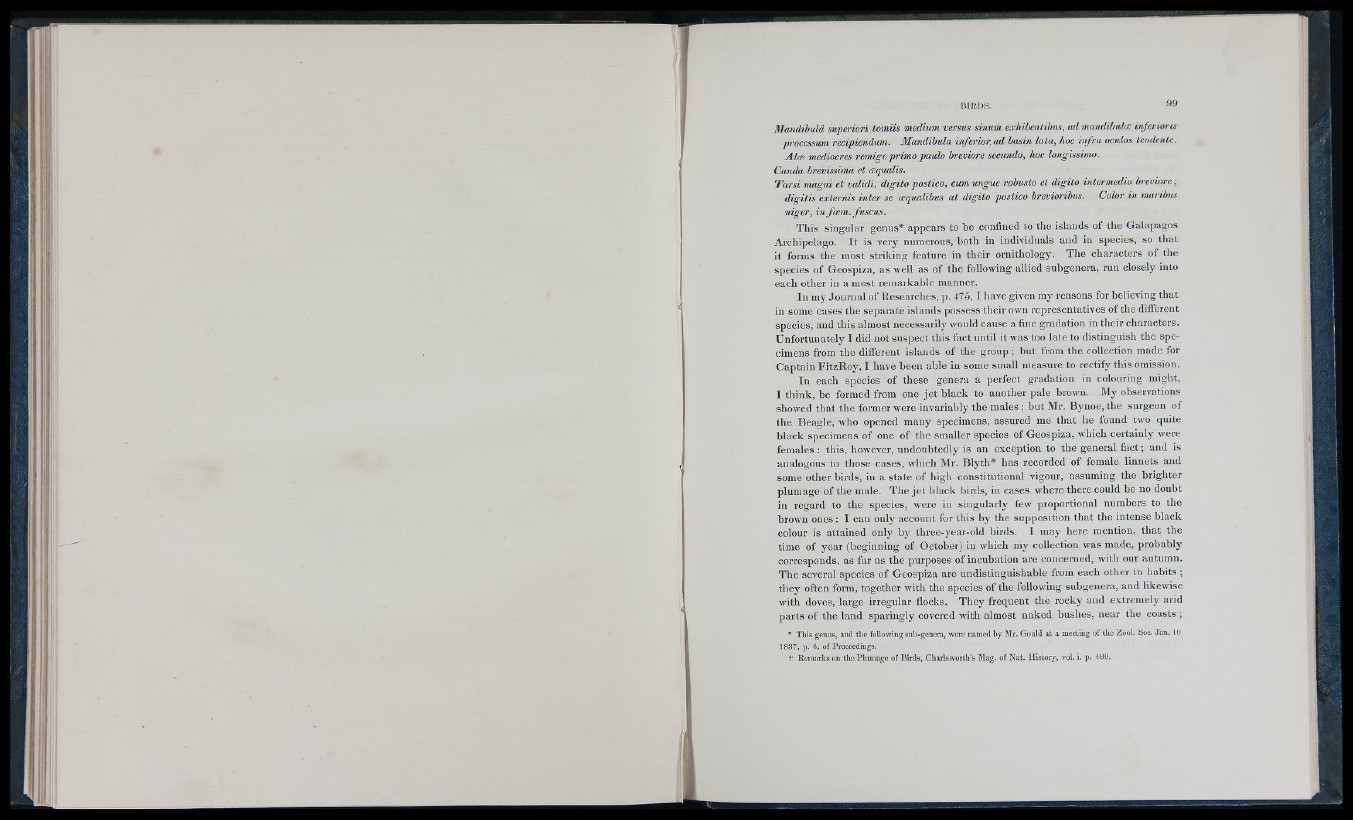
Mandihula supetiori tomiis medium versus sinum exhihentihus, ad mandihula inferioris
processum recipiendum. Mandihula inferior ad basin lata, hoc infra oculos tendente.
Aloe mediocres remige primo paulo breviore secundo, hoc longissimo.
Cauda brevissima et oequalis.
Tarsi magni et validi, digito postico, cum ungue robusto et digito intermedio breviore ;
digitis externis inter se oequalibus at digito postico brevioribus. Color in maribus
niger, in foem. fuscus.
This singular genus* appears to be confined to the islands of the Galapagos
Archipelago. It is very numerous, both in individuals and in species, so that
it forms the most striking feature in their ornithology. The characters of the
species of Geospiza, as well as of the following allied subgenera, run closely into
each other in a most remarkable manner.
In my Journal of Researches, p. 4 7 5 ,1 have given my reasons for believing that
in some cases the separate islands possess their own representatives oi the different
species, and this almost necessarily would cause a fine gradation in their characters.
Unfortunately I did not suspect this fact until it was too late to distinguish the specimens
from the different islands of the group ; but from the collection made for
Captain FitzRoy, I have been able in some small measure to rectify this omission.
In each species of these genera a perfect gradation in colouring might,
I think, be formed from one jet black to another pale brown. My observations
showed that the former were invariably the males ; but Mr. Bynoe, the surgeon oi
the Beagle, who opened many specimens, assured me that he found two quite
black specimens of one of the smaller species of Geospiza, which certainly were
females : this, however, undoubtedly is an exception to the general fact ; and is
analogous to those cases, which Mr. Blyth* has recorded of female linnets and
some other birds, in a state of high constitutional vigour, assuming the brighter
plumage of the male. The jet black birds, in cases, where there could be no doubt
in regard to the species, were in singularly few proportional numbers to the
brown ones : I can only account for this by the supposition that the intense black
colour is attained only by three-year-old birds. I may here mention, that the
time of year (beginning of October) in which my collection was made, probably
coiTCsponds, as far as tbe purposes of incubation are concerned, with our autumn.
The several species of Geospiza are undistinguishable from each other in habits ;
they often form, together with the species of the following subgenera, and likewise
with doves, large irregular flocks. They frequent the rocky and extremely arid
parts of the land sparingly covered with almost naked bushes, near the coasts ;
• This genus, and the following sub-gcncra, were named by Mr. Gould at a meeting of the Zool. Soc. Jan. 10
1837, p. 4. of Proceedings.
t lleniarks on the Plumage of Birds, Charlsworth’s Mag. of Nat. History, vol. i. p. 480.